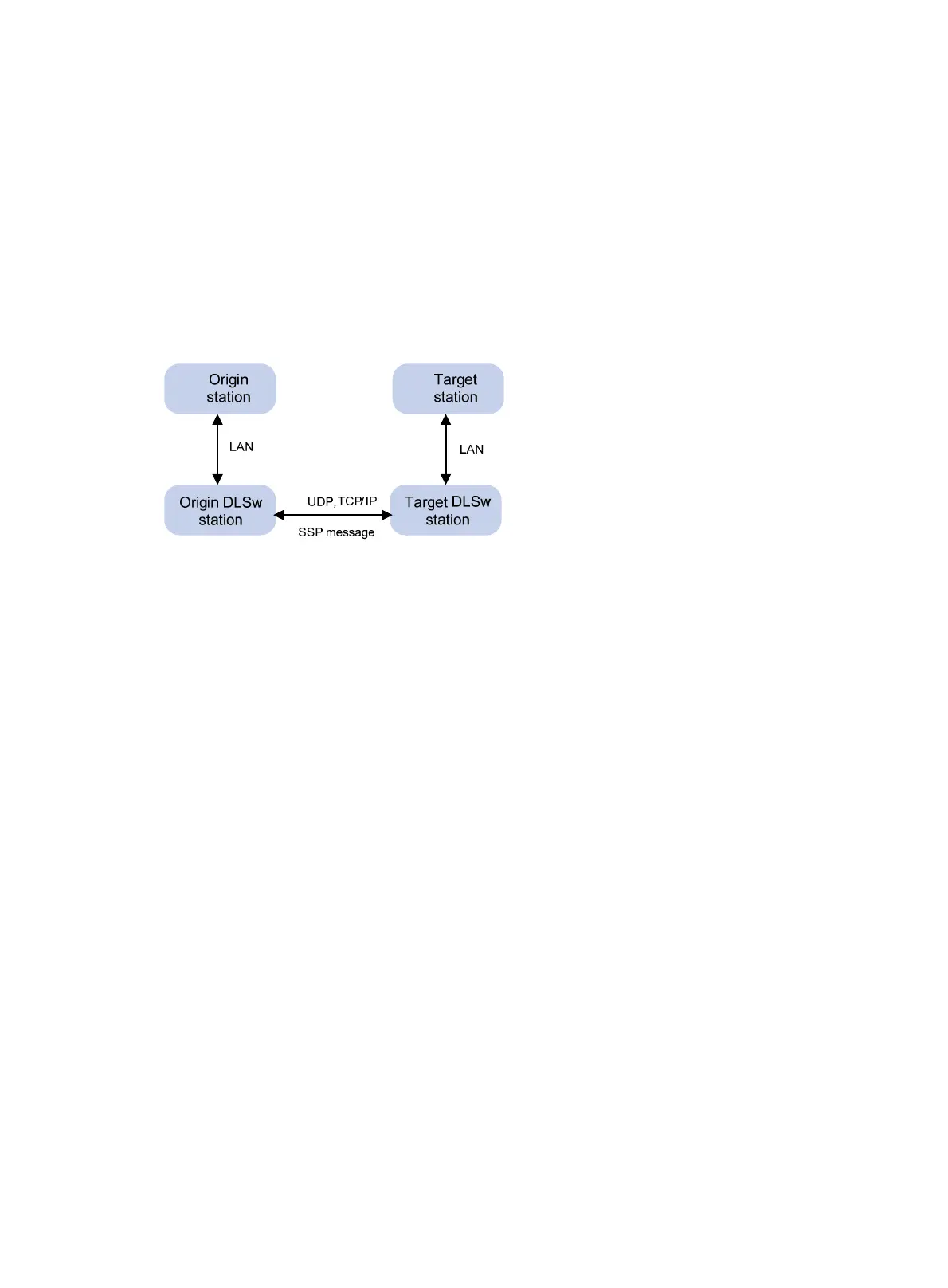222
• Excessive broadcasts—Although a local acknowledgement mechanism is provided in DLSw
v1.0, explorer frames might flood the WAN over the established TCP connections if the
reachability table of DLSw contains a small number of entries or no entries.
• Low maintainability—When a circuit is disconnected, DLSw v1.0 uses two types of messages
to notify the peer but cannot tell the disconnection cause. This adds to difficulty in locating the
reason for an abnormal circuit disconnection.
Enhancements in DLSw v2.0
DLSw v2.0 provides enhancements to address the above-mentioned problems and it remains
compatible with DLSw v1.0.
The components on a DLSw network are shown in Figure 76.
Figure 76
DLSw v2.0 network
In Figure 76, the origin station is the end station that originates communication, the target station is
the end station that accepts communication, the origin DLSw router is a DLSw-enabled router
connected to the origin station, and the target DLSw router is a DLSw-enabled router connected to
the target station. In this document, an origin DLSw v2.0 router is a DLSw v2.0–capable router.
DLSw v2.0 provides the following enhancements over DLSw v1.0:
• Using UDP packets to explore peer addresses.
To prevent unnecessary TCP connection setups, DLSw v2.0 sends explorer frames by using
UDP packets instead of over TCP connection, unless a TCP connection is present. These UDP
packets can be sent in two ways: multicast and unicast (depending on the specific situation).
Using UDP packets reduces, to some degree, the TCP connections required, and saves
network resources.
• Setting up a single TCP connection when required.
A TCP connection is set up after the origin and target DLSw v2.0 routers get reachability
information using UDP packets and when both the origin and target stations want to set up a
circuit between them. A DLSw circuit establishment process is simplified into two stages: first,
establishment of a single TCP connection. Then, capabilities exchange. If capabilities
negotiation fails, the source-end DLSw v2.0 router sends a reject packet to the peer and then
the TCP connection is taken down.
In DLSw v2.0, as a TCP connection is established only when a circuit is required between two
ends, the overheads of establishing and maintaining TCP connections are reduced, resulting in
better system resource utilization.
In case the origin and target DLSw routers use different versions of DLSw, for backward
compatibility, the one uses DLSw v2.0 works as a DLSw v1.0 router and follows RFC 1795
when setting up a TCP connection with its peer.
• Enhanced maintainability.
To enable a DLSw router to notify its peer about the reason for dropping a connection, DLSw
v2.0 defines five generic circuit halt reason codes: unknown error, received DISC from
end-station, detected DLC error with end-station, circuit-level protocol error, and
operator-initiated. The halt reason codes are sent to the peer in SSP messages.

